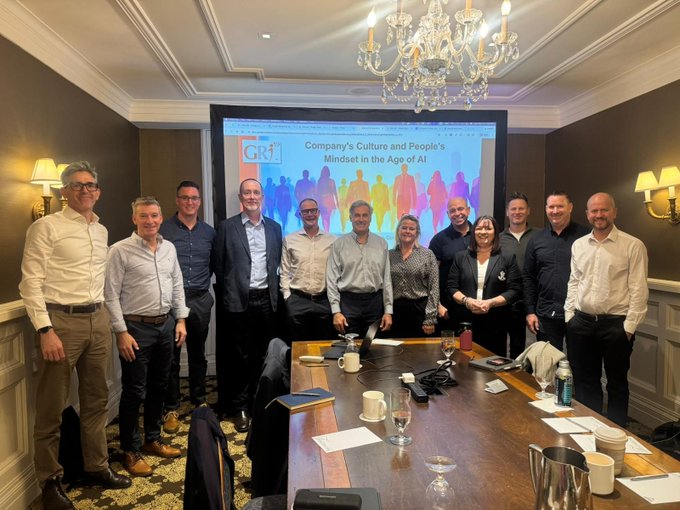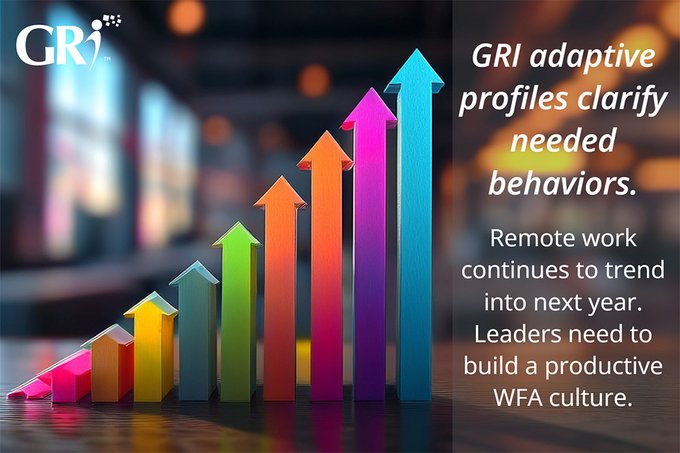3 Keys to Sharpen Your Intuition & Unlock Your Potential as a Leader
Posted by Frederic Lucas-Conwell

3 Keys to Sharpen Your Intuition & Unlock Your Potential as a Leader
Becoming aware of our implicit biases and the limitations of our intuition is an important aspect to the ongoing discussions about better integrating diversity in our organizations. It is central to becoming our best, most productive self, and the successful leaders that our organizations need us to be.
Intuition and biases carry undesired effects that eventually need to be addressed. Often, we don't realize the disadvantages of relying solely on our gut and the cost of that until we've gained more experience over time. Being more aware of these deficiencies may help us find solutions sooner rather than later.
Rationality and Intuition
The research on how people make decisions has been a major concern in the world of politics and economics. In the twentieth century, the prevailing view was that human beings are rational agents who have a need for logic, accurate judgments, and consistency; ultimately, they are impacted by biases that need to be controlled.
However, researchers eventually realized that the act of making a decision is less straightforward than they initially thought. Human beings' emotions impact their thinking and behaviors. Some important decisions can be unconsciously nudged, as Richard Thaler and Cass Sunstein described in their book by the same name.[1]
Research has analyzed how our decisions are influenced by our intuition and can be refined to lead to better decisions. This new framework has important implications for how we think and make decisions about ourselves and others.
Biases that Deeply Affect Our Judgment
The term "bias" describes something that may inappropriately affect our logical reasoning when we make decisions. This is something that we need to become aware of and resolve.
The quality of our assessments of people, and how it reflects on ourselves as well, is naturally affected by biases. Here are the most common ones.
- Stereotyping: preconceived opinions about a group of individuals.
- Selective Perception: a natural inclination towards our own needs, expectations, and values.
- Halo Effect: forming a general impression of a person or situation based on just one characteristic.
- Self-fulfilling Prophecy: the propensity to cause something to become true simply because we expect it to be true.
First key: Master most common biases. Be appreciative of differences of people from the other gender, other cultures, or who have a different age, political, religious, or sexual orientation than you. Consider what is common between you and them, rather than pointing to what's different.
Action: What are the biases you may be most susceptible to? Think about some examples including the context in which those biases manifest.
The Limitations of Our Intuition
Most of the time we operate based on our intuition, a gut feeling that guides our decisions. We may not verbalize why we feel good about some people and uncomfortable with others. Much of this appraisal is unconscious, unexpressed, and intuitive.
Intuition may be our best ally for capturing subtle, indefinable nuances. But at the same time, intuition can be our worst enemy because it is loaded with biases-including many that are not commonly listed -that affect our judgment and lead us to make assumptions about others and ourselves that can result in expensive mistakes.
As explained by Daniel Kahneman in his book, Thinking, Fast and Slow [2]-a masterpiece on intuition research-intuition can be considered as two systems that are working in parallel:
- System 1 is automatic, quick, requires no effort. It's the "no-brainer" of decision-making.
- System 2 requires attention, mental activities, concentration, and effort to reason or calculate.

System 1 continually assesses what is happening either from within us or outside us, our environment. It allows instant answers and adaptation without reaching for the more elaborate cognition of System 2. System 1 allows instant perception and reaction to friendly or hostile situations.
Do I feel good about Jane or Bob? System 1 instantly provides the answer. How do I effortlessly communicate with my teammates? Again, System 1 is in action, as it is continuously.
How should I adjust my communication to be more effective when speaking to a large audience? System 2 may have to operate here, at least until the behavior becomes natural.
The three most obvious System 1 phenomena are:
- Priming. Priming refers to how our impressions, attitudes, and decisions are unconsciously affected by our prior exposure to specific situations or events.
- We Don't Know What We Don't Know. Kahneman calls this aspect of our intuition "What You See Is All There Is" or WYSIATI for short. System 1 has the tendency to jump to conclusions without having all the facts, including critical ones.
- Substituting Questions. System 1 spontaneously substitutes easier questions for complex ones without our being conscious of this substitution.
Whether we want them to or not, we are all subject to those phenomena. They take time to educate, usually years or decades. The limitations of our intuition lead to the second key:
Second key: Consider how you evaluate people. Be knowledgeable about their characteristics and the techniques that you use for assessing those characteristics.
Action: Take notes on the characteristics you assess and what you infer from them. Then ask yourself: In what context are those characteristics and inferences relevant? When are they not? Which one should I keep or let go to make more refined, conscious decisions which are critical for driving individual performance?
Our Core Behaviors
Although not always visible from the surface, once we look at behavior, style, drive, and motivation, it becomes clear that there are any number of ways for individuals to perform, like actors and musicians do on stage with different roles and instruments. Those performances eventually lead to the successful outcomes that are expected of us.
Success is not an "if", rather it is merely a matter of how we decide to set, pursue, and achieve our goals. How we act and react to our environment is closely related to the positive and negative emotions that we experience while doing so, especially when we are adjusting our most natural behavior.
As we evidence with the GRI, adapting to our environment, away from our natural way of performing, can be demanding and involves emotional labor. Too much adaptation may put serious limitations on our ability to sustain motivation and achieve expected goals.
Leading beyond biases and intuition requires having an awareness of how we as human beings perform, what motivates us, and then being able to tap into our natural talents and strengths. When we operate in our sweet spot of talent and know when and how to adapt, we have the greatest opportunities to perform in our job.
This strategy applies to both ourselves and others who we have the responsibility to lead, while being capable to integrate their diversity into our day-to-day tactics.
Third key: Appreciate the behavioral/emotional component of how people perform, regardless of characteristics such as gender or cultural origin which may be subject to biases, and of other characteristics that are part of our intuition and cannot even be verbalized.
Action: What are the behaviors that each individual uniquely expresses? How do these behaviors help you in understanding and growing their talent?
Sharpen Your Intuition to Lead More Effectively
We are all human, and our impressions of people are inherently influenced by the concepts that are a part of our worldview, belief system, upbringing, and education.
However strongly we may feel about our intuition, its limitations for assessing others are deeply rooted in us and so pervasive that it is necessary to rely on more practical techniques to assist us in making better, more accurate assessments.
An important step in this process is becoming more aware of some characteristics that are more or less easy to assess, either consistent or malleable over time, relevant for work or not, and that eventually overlap with and inform other characteristics.
With the GRI we sharpen our intuition, minimize the effect of our biases, and ultimately, we lead people more effectively and authentically to succeed on their own terms.
[1] Daniel Kahneman, Thinking, Fast and Slow (New York: Farrar, Strauss and Giroux, 2011).
[2] Daniel Kahneman, Thinking, Fast and Slow (New York: Farrar, Strauss and Giroux, 2011).
Part of this article comes from our books, Discover the Best in You, and Lead Beyond Intuition, published by Growth Resources, Inc. Find more about our books and the GRI on our website: www.gri.co
Latest Articles
Groupama Successful Transformation in Romania: The GRI, Catalyst for Profound Change
The history of Groupama in Romania is an eloquent testament to resilience, strategic vision, and the transformative impact of innovative management tools. Arriving at the...
Hybrid Work: A Management Revolution
The COVID-19 pandemic has acted as an unprecedented catalyst, radically transforming our approach to work. What was once a marginal practice has become the norm for many...
Leadership 3.0: Objective Insights for People-Centric Leaders
Steve, a brilliant entrepreneur, poured his heart into his work. His team at "Innovatech" was on the brink of a major breakthrough, a new app that promised to revolutionize...



